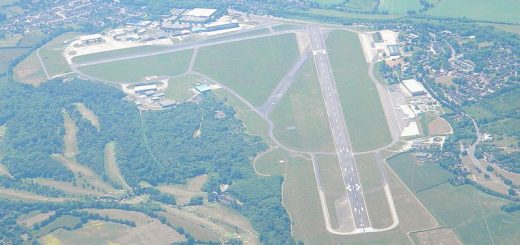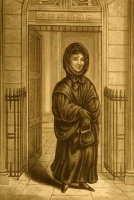The Brown Lady of Raynham Hall
The Brown Lady of Raynham Hall is one of the most famous hauntings in Britain, this is mainly down to the strange form captured by photographers from Country Life magazine in 1936. Before that event the Brown Lady had been reported several times, but many of the written accounts vary considerably.
 The hall dates from the 17th century, and has been in the hands of the Townsend family from that time. In some stories the apparition of the Brown Lady once haunted Houghton Hall, but came to Raynham with the sister of Robert Wallpole, who married Viscount Townsend in 1713.
The hall dates from the 17th century, and has been in the hands of the Townsend family from that time. In some stories the apparition of the Brown Lady once haunted Houghton Hall, but came to Raynham with the sister of Robert Wallpole, who married Viscount Townsend in 1713.
Lucia C Stone recorded the first reference to the ghost in 1835; the sighting took place at Christmas of the same year. Lord Charles Townsend had invited a number of guests to the hall for the Christmas festivities. Among them was a man called Colonel Loftus, who, with another guest called Hawkins, witnessed a figure in a brown dress. He also ran into the apparition on the main stairs. He described her as an aristocratic looking lady with one horrific feature: where her eyes should have been there were only empty sockets, highlighted in a face that glowed with an unearthly light. The captain drew a sketch of the apparition, and others also said that they had witnessed the ghost.
The next sighting was by a Captain Marryat (1792-1848), an author of sea novels, although no firm date is given for this encounter. In most accounts the captain has asked to stay in the haunted room because he believes that the haunting is the result of local smugglers. He is returning to his room with two companions, when they see a figure with a lantern coming towards them. They take refuge in a doorway, and the figure turns and grins at them in a “diabolical manner”. The captain, who is armed, looses off a shot, which passes straight through the figure and becomes lodged in the opposite wall. Fortunately for the Captain the figure is not a guest with a sense of humour in disguise, and the apparition vanishes.
The next publicised sighting was in 1926, when Lady Townsend admitted that her son and his friend had witnessed the ghost on the stairs. They identified the figure with the portrait of the lady hanging in the haunted room.
Ten years later in 1936, the most famous event occurred in the dubios history of the haunting. Two professional photographers, Captain Provand and his assistant Indre Shira, were taking photographs of the hall for ‘Country Life’ magazine. The date was the 19th September, and at 4.00pm that afternoon they were photographing the Hall’s main staircase. They had completed one exposure, and were preparing for another, when Shira saw a misty form ascending the stairs. He shouted to the captain that there was something on the stairs, and asked if the Captain was ready, he replied “yes” and took the cap off the lens, while Shira pressed the trigger for the flash light.
After this the captain came up from under the protective cloth, and asked what all the fuss was about. Shira explained that he had seen a shadowy, see-through figure on the stairs. When the negative was developed it showed the famous image. There were three witnesses to the negatives development, as Shira had wanted an independent observer to verify the event. He ran and got a chemist called Benjamin Jones, who managed the premises above which the development studio was located. A full account of the experience was published in Country Life magazine on the 26th of December 1936.
The photo was later examined by experts at the Country Life offices, where it was declared unlikely to have been tampered with. There have been a few detractors saying that Shira hoaxed the image by smearing grease on the lens or moving in front of the camera, but there is unlikely to be a definitive explanation for the photo. It is still held in the offices of Country Life.
There have been more recent stories suggesting the haunting has moved to a road between South and West Raynham, but this has not been verified. The spirit has not been reported at the hall since the photograph was taken.




Re: The Brown Lady of Raynham Hall
Maybe the photograph of the Brown Lady at the Raynham Hall should be given a Christian Burial so that her soul can depart from this world and spiritually progress to a relevant realm in the next world. Hail Mary Full Of Grace……..Amen !
Re: The Brown Lady of Raynham Hall
Such apparitions usually repeat themselves at some stage, yet this one didn’t. Surely this kind of partially opaque apparition would result in a reduced light level within the ghost area? If it is as genuine as the report implies, then this photograph equally implies that the phenomenon is generating its own luminescence, and doing so at a fairly high intensity.
Assuming, therefore, that the photo is entirely genuine, what manner of apparition is it really? Where is it sapping it’s energy from?
Re: The Brown Lady of Raynham Hall
The following account is from The Haunted Homes and Family Traditions of Great Britain, by John Ingram (1897).
Rainham, the seat of the Marquis Townshend, in Norfolk, has long been noted for its ghost known as " the Brown Lady." Mrs. Crowe, and many other writers on apparitions and kindred themes, have alluded to the circumstance of this family residence being haunted by a spectral woman, but their references are very slight and the particulars they give exceedingly meagre. Mrs. Crowe, indeed, mentions that many persons have seen" the Brown Lady," and speaks of a guest who one day inquired of his host, " Who was the lady in brown that he had met frequently on the stairs? ‘ But the most circumstantial account of the appearance of this apparition would appear to be that given by Lucia C. Stone, in Rifts in the Veil. This record she states she received from an eye-witness, and as a proof of its authenticity draws attention to the fact that the names of all parties concerned are given in full. The time of the incidents, however, cannot be given any nearer than between 1835 and 1849.
According to this narrative a large party had assembled at Rainham, in order to pass the Christmas there. Lord and Lady Charles Townshend were the host and hostess on this occasion, and among the assembled guests were Colonel and Mrs. Loftus, and Miss Page, a cousin of the latter. Colonel Loftus was a brother of Lady Charles and cousin to Lord Charles, being a Townshend on his mother’s side.
There was a tradition in the Townshend family that at certain intervals the apparition of a lady attired in brown brocade had been seen flitting about the building; but nothing had occurred for some long time past, and the old stories respecting the hauntings had been well-nigh forgotten.
One night Colonel Loftus and a gentleman named Hawkins sat up rather late over a game of chess; they went up-stairs, and were bidding each other " goodnight," when Mr. Hawkins exclaimed, "Loftus, who is that standing at your sister’s door? How strangely she is dressed." Colonel Loftus, who was near-sighted, put up his glass and followed the figure, which went on for some little distance, when he lost sight of it. A second night she appeared to him, and this time, to prevent her escape, he went up a staircase which would bring him face to face with her. There, in a full light, stood a stately lady in her rich brocade, a sort of coif on her head, the features clearly defined; but where there should have been eyes were nothing but dark hollows.
"These were the two appearances he described to me," says Lucia Stone, (e and he sketched her afterwards. I saw the sketch just after his return from Rainham. The lady was seen hy several others, and I have heard the stories, but not from their own lips, so I forbear to give them ; but perhaps I should mention that the cousin of Mrs. Loftus, Miss Page, whom I knew very intimately, asked Lord Charles if he too believed in the apparition? He replied, ‘ I cannot but believe, for she ushered me into my room last night.’
The servants were frightened, and one after the other gave warning. Lord Charles Townshend, thinking that, perhaps, after all, it might be a trick on the part of someone in the house, had various alterations made in the way of bolts, locks, and so forth. This proving useless, he engaged some of the London police force to come down, and made them assume his livery ; but they were unable to discover anything during their stay at Rainham.
There does not seem to be any known legend connected with the appearance of the apparition of "the Brown Lady."